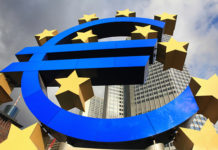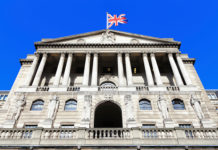All major US indices advanced to fresh ATH yesterday; the S&P500 and Nasdaq 100 traded at the uncharted territory, while the Dow Jones Industrial index hit the 40’000 mark for the first time – sparking the good, old discussions about ‘how long did it take the Dow Jones to walk the last 10’000 points’. It took the index only 872 trading days to gain 10’000 points – the Federal Reserve’s (Fed) aggressive policy tightening didn’t have a long-lasting effect: that’s the major takeaway for the future.
But anyway, all three indices ended yesterday’s session slightly lower than when they started – despite hitting a record during the session. Fed members insisted that the Fed’s rate policy is in a good place right now, and that it will probably take longer for inflation to slow to the 2% target.
The elephant in the room
And it will probably take US inflation some more time to go back to the 2% unless there is a severe economic meltdown. Note that one of the major risks to global inflation – the Chinese recovery – is probably getting underway this year. The Chinese growth will mostly be driven by a robust government support to industrial production rather than improved consumer-based demand, but it doesn’t really matter who drives growth for the prices of global commodities. In the past, the Chinese growth model relied on government-fueled industrial growth. And Xi Jinping wanted this model to shift toward a consumer-based growth, but his less-than-subtle tactics hammered consumer confidence and obliged him to go back to the good, old growth tactics. So, it’s no surprise that China revealed a better-than-expected industrial production in April despite slower retail sales and a bigger fall in house prices. But hey, China will also be buying houses at distressed prices to slow down the meltdown in its property market. Consequently, China will go back to growth and that’s not great news for global inflation.
Indeed, copper futures are up by 40% since the February dip, iron ore recovered more than 24% since April dip and is now consolidating in the bullish consolidation zone, and even the nat gas prices are up by more than 40% since the beginning of the month. Crude prices, on the other hand, have been falling since April but are still up by 9% since the beginning of the year. And more importantly, all these commodity prices are supported by the perspective of interest rate cuts from the major central banks starting from June in Europe… and the Chinese demand will only make the upside pressure worst.
Regardless
But regardless, the bulls remain in charge of the Western market: earnings season has been robust so far and the earnings forecasts for the US companies are rising at the highest speed in two years. In this context, Walmart was the latest big name to announce earnings yesterday, and the earnings announcement went well. The revenue growth exceeded the company’s own forecast, its CFO said that ‘many consumer pocketbooks are still stretched’. The latter could’ve been bad news for the Fed doves who need the US consumer spending to slow, to temper inflation. But don’t worry, because Walmart shoppers are spending more of their paychecks on essential items and less on general merchandise, and that more than half of checkouts contained at least one of its private brand – where 70% of the items are priced under $5. Moreover, the biggest growth comes from upper income levels, who also visit the Walmart shops more frequently because it costs less. So Walmart shares jumped 7% to an ATH yesterday, but Walmart’s success was seen as another hint that the US consumers come under a rising pressure of higher prices, and that’s a positive for the Fed doves, along with disappointing quarterly results from both Home Depot and Deere and Co.
And as per the Fed policy, despite the Fed members’ cautious approach, the Fed said earlier this month that its next move is probably not a rate hike, and data this week showed stagnating retail sales, gloomy housing markets, a weak Philly Fed manufacturing index, weak industrial production data, an initial jobless claims number above 200’000 and above all, a weaker-than-expected core CPI figure. So all in all, this week is set to end on a more dovish note compared than when it started although I insist that inflation is nowhere close to the levels where the Fed could reasonably and publicly hint at an upcoming rate cut.
The USD index rebounded from the 100-DMA yesterday, and is back above the 200-DMA and the 38.2% Fibonacci retracement that distinguishes between the continuation of the ytd positive trend and a bearish reversal. If the index doesn’t fall sustainably below this major Fibonacci level, the buying pressure on the major peers will remain limited, as I think should be the case given the clear divergence between a cautious Fed and well-determined European Central Bank (ECB) to cut rates for example. In this context, the EURUSD is back to its bearish ytd trend after having spent a few days above the major 38.2% Fibonacci retracement of its own (near the 1.08 level). The USDCHF holds ground near the 50-DMA and the USDJPY is back above 155, and remains bid after the Bank of Japan (BoJ) decided not to follow up with lower bond buying as they did earlier this week and the Governor Ueda said that they have no plans to sell the ETF holdings in the close future.











